Suicide by pilot
Suicide by pilot is an event in which a certified or uncertified pilot deliberately crashes or attempts to crash an aircraft in a suicide attempt, sometimes to kill passengers on board or people on the ground. This is sometimes described as a murder–suicide.[1] It is suspected as being a possible cause of the crashes of several commercial flights and is confirmed as the cause in others. Generally, it is difficult for crash investigators to determine the motives of the pilots, since they sometimes act deliberately to turn off recording devices or otherwise hinder future investigations.[2] As a result, pilot suicide can be difficult to prove with certainty.[3][4]
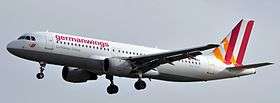
.jpg)
Investigators do not qualify aircraft incidents as suicide unless there is compelling evidence that the pilot was doing so. This evidence would include suicide notes, previous attempts, threats of suicide, or a history of mental illness. In a study of pilot suicides from 2002–2013, eight cases were identified as definite suicides, with five additional cases of undetermined cause that may have been suicides.[5] Investigators may also work with terrorism experts, checking for links to extremist groups to try to determine whether the suicide was an act of terrorism.[6][7][8]
Most cases of suicide by pilot involve general aviation in small aircraft. In most of these, the pilot is the only person on board the aircraft. In about half of the cases, the pilot had used drugs, usually alcohol or anti-depressants, which would normally have led to a flying ban. Many of these pilots have had mental illness histories that they have hidden from regulators.[5]
World War II suicide attacks
During World War II, the Russian aviator Nikolai Gastello was the first Soviet pilot credited with a (later disputed) "fire taran" in a suicide attack by an aircraft on a ground target, although his aircraft had been shot down and was in a rapid partially controllable descent.[9] In the following years there were more suicide attacks; the best known by military aviators are the attacks from the Empire of Japan, called kamikaze, against Allied naval vessels in the closing stages of the Pacific campaign of World War II. These attacks were designed to destroy warships more effectively than was possible with conventional attacks; between October 1944 and 1945, 3,860 kamikaze pilots committed suicide in this manner.[10]
List of declared or suspected pilot suicides
This list excludes World War II suicide attacks on ground targets (see section above).
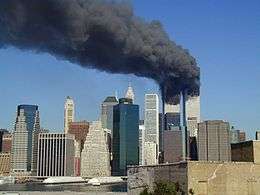
Legend:
| Confirmed suicide | |
| Believed to be suicide | |
| Attack on aircraft halted | |
By pilots in control of whole flight
| Crash date | Perpetrator | Flight Type | Flight | Fatalities | Theories | Aircraft | Refs | |
|---|---|---|---|---|---|---|---|---|
| March 27, 1972 | Pilot | General aviation | Stolen aircraft | 1 (pilot) | Timofei Shovkunov crashed an Antonov An-2 into his own apartment. He was the lone casualty. |  |
[11] | |
| September 26, 1976 | Pilot | General aviation | Stolen aircraft | 5 (pilot, 4 on the ground) |
Vladimir Serkov attempted to pilot his Antonov An-2 plane into his ex-wife's parents' apartment where she and his two-year-old son were visiting. See An-2 incidents. |  |
[12] | |
| January 5, 1977 | Pilot | General aviation | Connellan air disaster | 5 (pilot, 4 on the ground) |
Colin Richard Forman, a disgruntled former employee of Connellan Airways (Connair), flew a Beechcraft Baron into the Connair complex at the Alice Springs Airport, Northern Territory, Australia. | 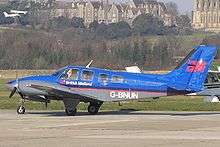 |
[13] | |
| August 22, 1979 | Pilot | General aviation | Stolen aircraft | 4 (pilot, 3 on the ground) |
A 23-year-old aircraft mechanic working at Bogota El Dorado Airport stole a Hawker-Siddeley HS-748 and crashed it into a Bogota suburb. | [14] | ||
| June 1, 1980 | Pilot | General aviation | Barra do Garças air disaster | 7 (pilot, 4 passengers, 2 on ground) |
After an argument with his wife and mother-in-law, Brazilian pilot Mauro Milhomem attempted to crash his Embraer EMB 721 Sertanejo, which was also carrying four passengers, into a hotel owned by a family member after he discovered that his wife had cheated on him. He failed to hit the hotel, and instead hit several objects before crashing the plane into another building. His wife killed herself a few days later. In total, seven people were killed and four were wounded. | [15] | ||
| February 9, 1982 | Pilot | Commercial flight | Japan Airlines Flight 350 | 24 |
Pilot engaged number 2 and 3 engines' thrust-reversers in flight. The first officer and flight engineer were able to partially regain control. | [16] | ||
| September 15, 1982 | Pilot | General aviation | Bankstown Airport incident | 1 |
Philip Henryk Wozniak, a student pilot, stole a SOCATA Tobago killed himself by deliberately crashing into Bankstown Airport in the City of Bankstown, New South Wales, Australia. Two aircraft on the ground were also destroyed. | [17][18][19][20][21] | ||
| March 23, 1994 | Pilot | General aviation | Unscheduled solo flight from Spirit of St. Louis Airport in Chesterfield, Missouri. | 1 |
Bob Richards was having marital and other personal problems. He deliberately crashed his Piper Cherokee single-engine airplane onto the ground. He was alone in the plane, and thus the only fatality. | [22] | ||
| July 13, 1994 | Pilot | Military | Stolen aircraft | 1 |
A Russian air force engineer stole an Antonov An-26 at Kubinka air base outside Moscow. He circled the aircraft until it ran out of fuel and crashed. | [23] | ||
| August 21, 1994 | Pilot | Commercial flight | Royal Air Maroc Flight 630 | 44 |
Crashed intentionally by pilot | [24] [25] | ||
| September 12, 1994 | Pilot | General aviation | Stolen aircraft | 1 |
Crashed intentionally by Frank Eugene Corder on the White House south lawn. | 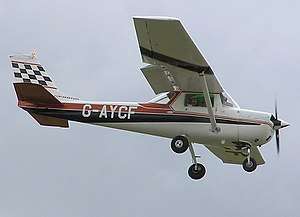 |
[26] | |
| April 2, 1997 | Pilot | Military | Craig D. Button incident | 1 |
While on a training mission, Button flew off course and ceased radio contact. The A-10 Thunderbolt II later crashed into a mountain in Colorado. | |||
| December 19, 1997 | Pilot | Commercial flight | SilkAir Flight 185 | 104 |
Crashed intentionally by pilot (disputed by Indonesian government) | .jpg) |
[27] | |
| September 6, 1998 | Pilot | General aviation | Stolen aircraft | 1 | Crashed intentionally by off duty flight instructor at Embry-Riddle Aeronautical University in Daytona Beach, Florida. |  |
[28] | |
| October 11, 1999 | Pilot | Stolen commercial aircraft | 1999 Air Botswana incident | 1 |
Pilot commandeered and then crashed an Air Botswana aircraft into a group of aircraft at Sir Seretse Khama International Airport in Gaborone, Botswana |  |
[29] | |
| October 31, 1999 | First officer | Commercial flight | EgyptAir Flight 990 | 217 |
After the captain left the cockpit, relief first officer Gameel Al-Batouti turned off the autopilot while repeatedly saying "I rely on God" in Arabic, causing the plane to go into a dive and crash into the Atlantic Ocean. The reason for his inputs was not determined[30][31][32] (U.S. National Transportation Safety Board); Mechanical fault in elevator control system (Egyptian Civil Aviation Authority) (cause is still disputed)[33] | 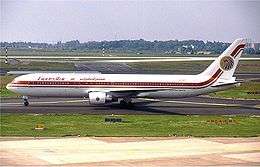 |
[34] | |
| January 5, 2002 | Pilot | General aviation | 2002 Tampa airplane crash | 1 (pilot, damaged an office) |
Crashed into Bank of America Plaza. The pilot, teen Charles J. Bishop, credited and praised Osama bin Laden for September 11, 2001 attacks in his suicide note. | [36] | ||
| April 18, 2002 | Pilot | General aviation | 2002 Pirelli Tower airplane crash | 3 (pilot, 2 on ground) |
65-year old Luigi Fasulo piloted his aircraft, a Rockwell Commander 112, and crashed into the Pirelli Tower in Milan, Italy. | [37] | ||
| July 22, 2005 | Pilot | General aviation | 2005 Berlin airplane crash | 1 | A 39-year old pilot deliberately crashed his own light aircraft, a Platzer Kiebitz, in a field right in front of the Reichstag in Berlin. | [38] | ||
| February 18, 2010 | Pilot | General aviation | 2010 Austin suicide attack | 2 (pilot, 1 on the ground) |
Andrew Joseph Stack III deliberately crashed his single-engine Piper Dakota light aircraft into Building I of the Echelon complex housing IRS offices in Austin, Texas, United States. | [39] | ||
| July 17, 2012 | Pilot | Stolen commercial aircraft | Stolen Canadair RegionalJet | 1 |
A commercial pilot stole the aircraft at the St. George Regional Airport in St. George, Utah. The aircraft ran for several meters before it struck part of the terminal building and ended up in a parking lot. The pilot then shot himself once, killing himself inside the plane. | [40][41] | ||
| November 29, 2013 | Pilot | Commercial flight | LAM Mozambique Airlines Flight 470 | 33 |
The pilot intentionally crashed the aircraft. The co-pilot was locked out of the cockpit, according to the voice recorder. | 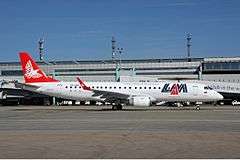 |
[24] | |
| March 24, 2015 | First officer | Commercial flight | Germanwings Flight 9525 | 150 |
Co-pilot Andreas Lubitz, previously treated for depression and suicidal tendencies, locked the captain out of the cockpit before deliberately letting the plane crash into a mountain near Prads-Haute-Bléone, Alpes-de-Haute-Provence, France. | [42] | ||
| October 11, 2016 | Student pilot | General aviation | East Hartford, CT Piper PA-34 Seneca crash | 1 |
Jordanian student pilot Feras Freitekh was killed and his instructor injured after they argued and wrestled for control of the airplane on landing approach; the plane crashed into a utility pole near the Pratt & Whitney headquarters. Investigators concluded the crash was an intentional act motivated by suicide based on the surviving instructor, who said there was an argument and struggle for control. The FBI was investigating, but he was not known to intelligence agencies, no religious statements were heard, and nothing else pointed to terrorism. | [43] | ||
| March 15, 2017 | Pilot | General aviation | Manitouwadge Cessna crash | 1 | Xin Rong, an experienced pilot, departed from Ann Arbor, Michigan, United States, in a Cessna 172P and disappeared. The aircraft was found wrecked near Manitouwadge, Ontario, Canada, with the right-hand door open, but no human remains nor footprints in the snow were found at the crash site. Investigators believe that Rong deliberately jumped out somewhere en route and the Cessna subsequently ran out of fuel. His body has not been found and he was subsequently declared dead. | [44][45] | ||
| August 10, 2018 | Ground service employee | Stolen commercial aircraft | 2018 Horizon Air Q400 incident | 1 | Horizon Air ground service employee Richard "Beebo" Russell conducted an unauthorized take-off in a Bombardier Dash 8 Q400 from Sea-Tac International Airport, performing aerobatic maneuvers over SeaTac and Puget Sound whilst being pursued by fighter jets, before crashing the plane into Ketron Island in the South Puget Sound. | .jpg) |
[46][47] | |
| August 13, 2018 | Pilot | Stolen private aircraft | Stolen Cessna 525 CitationJet | 1 | A man who was released after arrest for domestic assault charges stole an aircraft then crashed at his own home in Payson, Utah, in an attempt to murder his spouse. The man, who was an experienced pilot, was killed while no one in the house was harmed. | [48] | ||
| March 23, 2019 | Pilot | General aviation | Beechcraft B200 Super King Air | 1 | A man who was an uninvited guest at a private party earlier that day crashed the airplane into a clubhouse at Matsieng Air Strip, Botswana. The clubhouse was evacuated prior to the crash, so that the perpetrator remained the sole fatality. | [49] | ||
By hijackers
| Crash date | Attacker | Flight Type | Flight | Fatalities | Theories | Aircraft | Refs | |
|---|---|---|---|---|---|---|---|---|
| May 7, 1964 | Passenger | Commercial flight | Pacific Air Lines Flight 773 | 44 | Francisco Paula Gonzales, a depressed man in debt, shot both pilots before shooting himself, causing the plane to crash. All 44 people on board died. |  |
[50] | |
| March 17, 1970 | Shooter | Commercial flight | Eastern Air Lines Shuttle Flight 1320 | 1 (first officer) |
Passenger John J. Divivo shot both pilots, but the first officer took Divivo's gun and shot him before succumbing to his own wounds. Despite gunshot wounds in both arms, the captain landed the aircraft safely. Divivo subsequently hanged himself while awaiting trial. | 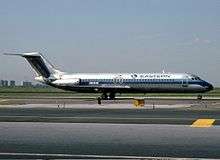 |
[51][52] | |
| February 22, 1974 | Shooter | Commercial flight | Delta Airlines Flight 523 | 3 (hijacker, co-pilot, police officer) |
Samuel Byck intended to crash into the White House in the hope of killing U.S. President Richard Nixon. He killed a police officer and hijacked the aircraft, but the aircraft never left the gate. Byck shot the co-pilot before being wounded by police in a shootout and committing suicide. | [53] | ||
| December 7, 1987 | Former employee | Commercial flight | Pacific Southwest Airlines Flight 1771 | 43 (all; five shot dead before impact) |
The plane was hijacked by one of the passengers, a disgruntled former employee of USAir, who shot his former boss, both pilots, a flight attendant and another person dead before crashing the plane near Cayucos, California, United States. | .jpg) |
[54] | |
| April 7, 1994 | Employee and off duty pilot | Commercial flight | Federal Express Flight 705 | 0 (4 injured) |
Auburn Calloway, a deadheading Federal Express employee, facing possible dismissal, smuggled a hammer and speargun aboard, then attempted to hijack the cargo jet before crashing it into the FedEx headquarters as part of an insurance fraud scheme for his family's benefit. Despite suffering from injuries inflicted by Calloway with the hammer, the crew fought off the hijacker using a number of techniques, including inverting the plane and flying at near-supersonic speed, and landed the plane safely. | %2C_FedEx_JP7375978.jpg) |
[55] | |
| December 24, 1994 | Terrorist hijackers | Commercial flight | Air France Flight 8969 | 7 (all 4 hijackers, 3 passengers) |
After having killed three passengers, the hijacker intended to crash the aircraft into the Eiffel Tower in Paris. When the aircraft reached Marseille, a counterterror unit of the French National Gendarmerie (GIGN) raided the aircraft and killed all four hijackers. | 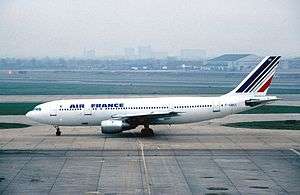 |
[56] | |
| September 11, 2001 | Terrorist hijackers | Commercial flight | American Airlines Flight 11 | 1692 (87 passengers and crew, 5 hijackers, about 1600 on the ground) |
Aircraft hijacked and crashed into the North Tower of the World Trade Center by hijackers as part of the September 11, 2001 attacks. | .jpg) |
[57] | |
| September 11, 2001 | Terrorist hijackers | Commercial flight | United Airlines Flight 175 | 965 (60 passengers and crew, 5 hijackers, about 900 on the ground) |
Aircraft hijacked and crashed into the South Tower of the World Trade Center by hijackers as part of September 11, 2001 attacks. |  |
[57] | |
| September 11, 2001 | Terrorist hijackers | Commercial flight | American Airlines Flight 77 | 189 (59 passengers and crew, 5 hijackers, 125 on the ground) |
Aircraft hijacked and crashed into the Pentagon by hijackers as part of September 11, 2001 attacks. | 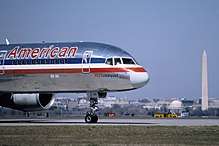 |
[57] | |
| September 11, 2001 | Terrorist hijackers | Commercial flight | United Airlines Flight 93 | 44 (40 passengers and crew, 4 hijackers) |
Aircraft hijacked as part of September 11, 2001 attacks. Passengers revolted against the hijackers, and the plane crashed by hijackers in Stonycreek Township, Pennsylvania. Although the plane crashed with the death of all aboard, the passengers prevented the hijackers from reaching their target for another attack (thought to be the White House or the Capitol Building). |
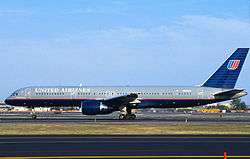 |
[57] | |
Published studies
In a 2016 study published in Aerospace Medicine and Human Performance, Kenedi et al. systematically review suicide and homicide-suicide events involving aircraft. They note that "In aeromedical literature and in the media, these very different events are both described as pilot suicide, but in psychiatry they are considered separate events with distinct risk factors." The study (1999–2015) reviews medical databases, internet search engines, and aviation safety databases and includes 65 cases of pilot suicide (compared to 195 pilot-errors in those years) and six cases of passengers who jumped from aircraft. There are also 18 cases of homicide-suicide involving 732 deaths. Pilots perpetrated 13 homicide-suicide events. Compared to non-aviation samples, a large percentage of pilot suicides in this study were homicide-suicides (17%).[58]
Kenedi et al. note that homicide-suicide events occur only extremely rarely, but that their impact, in terms of the proportion of deaths, is significant when compared to deaths from accidents. They state: "There is evidence of clustering where pilot suicides occur after media reports of suicide or homicide-suicide. Five of six homicide-suicide events by pilots of commercial airliners occurred after they were left alone in the cockpit. This, along with a sixth incident in which active intervention by a Japan Air crew saved 150 lives (Japan Airlines Flight 350), suggests that having two flight members in the cockpit is potentially protective. No single factor was associated with the risk for suicide or homicide-suicide. Factors associated with both events included legal and financial crises, occupational conflict, mental illness, and relationship stressors. Drugs and/or alcohol played a role in almost half of suicides, but not in homicide-suicides."[58]
Prevention
U.S. regulations require at least two flight crew members to be in the cockpit at all times for safety reasons, to be able to help in any medical or other emergency, including intervening if a crew member would try to crash the plane.[59][60] Following the deliberate crash of Germanwings Flight 9525 on March 24, 2015, some European and Canadian and Japanese airlines adopted a two-in-cockpit policy[61][62] as did all Australian airlines for aircraft with fifty or more passenger seats.[63]
See also
- Aviation accidents and incidents
- Aviation safety
- List of aircraft hijackings, for instances where a hijacker crashed the aircraft
- Kamikaze
- Vehicle ramming attack
- Mental health in aviation
- Suicide by cop
References
- Charles Bremner (Paris), March 26, 2015, The Times, Locked door boosts pilot suicide theory Archived March 27, 2015, at the Wayback Machine. Retrieved March 26, 2015
- RICHARD LLOYD PARRY, December 16, 2000, The Independent, Singaporean air crash that killed 104 was suicide by pilot, say investigators Archived September 25, 2015, at the Wayback Machine. Retrieved March 26, 2015, "...An airliner which crashed into an Indonesian swamp, killing all 104 people on board, was an apparent suicide attempt by the pilot, ... the cockpit voice and data recorders had been switched off half a minute before the aircraft began its descent."
- Toby Young, March 16, 2014, The Telegraph, Could a four-year-old thriller unlock the mystery of flight MH370? Archived March 4, 2016, at the Wayback Machine. Retrieved March 26, 2015, "...If this was a case of "suicide-by-pilot", why do we still know so little about the motive? I..."
- March 31, 2014, The Guardian, MH370: authorities release new account of pilot's final words: Malaysia's civil aviation authority say pilot's final words heard by air traffic control were 'goodnight Malaysian three seven zero' Archived April 10, 2017, at the Wayback Machine. Retrieved March 26, 2015, "...Malaysia says the plane, which disappeared less than an hour into its flight, was likely to have been diverted deliberately far off course. Investigators have determined no apparent motive or other red flags among the 227 passengers or the 12 crew. ..."
- Lewis, Russell; Forster, Estrella; Whinnery, James; Webster, Nicholas (February 2014). "Aircraft-Assisted Pilot Suicides in the United States, 2003-2012" (PDF). Civil Aerospace Medical Institute. Federal Aviation Administration. Archived (PDF) from the original on April 3, 2015. Retrieved March 29, 2015. Cite journal requires
|journal=(help) - March 2015, The Independent, ... Co-pilot of crashed Germanwings flight 9525 'wanted to destroy plane in suicide and mass murder mission' Archived September 25, 2015, at the Wayback Machine
- Jane Onyanga-Omara, January 19, 2015, USA Today, No evidence of terrorism in AirAsia crash Archived August 21, 2017, at the Wayback Machine. Retrieved March 27, 2015, "...Investigators have found no evidence so far that terrorism was involved in the crash of AirAsia Flight 8501, ..."
- March 27, 2014, The New Zealand Herald, Flight MH370: Terrorism expert backs theory of pilot suicide flight Archived February 22, 2015, at the Wayback Machine. Retrieved March 27, 2015, "...University of Canterbury Professor Greg Newbold, who lectures on terrorism, said the only person who could have changed MH370's computerised flight plan and switched off its electronics was someone who was highly experienced...."
- "Гастелло Николай Францевич". Archived from the original on March 17, 2015. Retrieved March 30, 2015.
- Zaloga, Steve. Kamikaze: Japanese Special Attack Weapons 1944-45. p. 12. Archived from the original on July 4, 2014. Retrieved September 26, 2016.
- Horrific ‘suicides by plane’ that occurred in the USSR
- "Criminal Occurrence Description 26 September 1976". Aviation Safety Network. Archived from the original on March 29, 2015. Retrieved March 27, 2015.
- Kramer, Tarla. "The Silent Grief of Alice Springs". BushMag. Retrieved November 20, 2010.
- "Accident Description 22 August 1979". Aviation Safety Network. Archived from the original on December 13, 2016. Retrieved March 27, 2015.
-
Cinco mortos no choque do "Sertanejo" Archived December 29, 2017, at the Wayback Machine, Folha de S.Paulo (June 3, 1980)
Morrem feridos no acidente Archived December 29, 2017, at the Wayback Machine, Folha de S.Paulo (June 5, 1980)
- Mulher se mata depois do marido se suicidar, Tribuna da Imprensa (June 6, 1980) - Stokes, Henry Scott. "Cockpit Fight Reported on Jet That Crashed in Tokyo Archived May 2, 2008, at the Wayback Machine," The New York Times. February 14, 1982. Retrieved June 24, 2011.
- "ASN Wikibase Occurrence # 33040 - Socata TB10 Tobago VH-BXC 16-SEP-1982". Retrieved January 6, 2020.
- "VH-AEU. Douglas C-47-DL. c/n 6108. Badly damaged during crash of a suicidal pilot at Bankstown Airport". Archived from the original on September 23, 2015. Retrieved March 26, 2015.
- "Plane crashes at Bankstown, pg5, The Age, 16 September 1982". Newspapers.com. Retrieved July 11, 2016.
- "WOZNIAK, Philip Henryk (death notice), pg30, The Sydney Morning Herald, 22 September 1982". Newspapers.com. Retrieved July 11, 2016.
- "No inquest on plane death, pg14, The Sydney Morning Herald, 09 February 1983". Newspapers.com. Retrieved July 11, 2016.
- https://www.stltoday.com/news/archives/was-it-news-years-ago-some-soul-searching-after-the/article_20ce715f-591a-5633-918f-b3724c5e7071.html
- "Accident Description 13 July 1994". Aviation Safety Network. Archived from the original on March 30, 2015. Retrieved March 27, 2015.
- 2015, Aviation Safety News, List of aircraft accidents caused by pilot suicide Archived March 26, 2015, at the Wayback Machine. Retrieved March 26, 2015
- "Crash that killed 44 was pilot suicide Archived April 20, 2016, at the Wayback Machine." Associated Press at the Altus Times. Thursday August 25, 1994. p. 14. Retrieved November 5, 2013.
- Stephen Labaton (September 13, 1994). "CRASH AT THE WHITE HOUSE: THE DEFENSES; Pilot's Exploit Rattles White House Officials - New York Times". The New York Times. Retrieved September 8, 2008.
- "Pushed to the Limit". Mayday. Season 12. Episode 4. August 24, 2012.
- "20001211X11123-20191201-232056". app.ntsb.gov. Retrieved December 2, 2019.
- "World: Africa Suicide pilot destroys Air Botswana fleet". BBC News. October 11, 1999. Archived from the original on March 29, 2015. Retrieved March 26, 2015.
- "NTSB Releases EgyptAir Flight 990 Final Report". NTSB. March 21, 2002. Archived from the original on October 10, 2012. Retrieved January 11, 2019.
- Erica Goode (March 27, 2015). "Suicide by Plane Crash Is Rare but Not Without Precedent". The New York Times. Archived from the original on March 27, 2015. Retrieved March 28, 2015.
- Brad Plumer. "The disturbing history of pilots who deliberately crash their own planes". Vox. Archived from the original on August 21, 2017. Retrieved June 13, 2017.
- "Report of Investigation of Accident: EgyptAir 990" (PDF). ECAA. June 2001. Archived from the original (PDF) on June 22, 2011. Retrieved January 11, 2019.
- Ellison, Michael (June 9, 2000). "US and Egypt split on fatal plane crash". The Guardian. Archived from the original on August 24, 2013. Retrieved May 1, 2011.
- "Germanwings Plane Crash Investigation: Echoes of 1999 EgyptAir Disaster". The New York Times. March 26, 2015. Archived from the original on July 8, 2015. Retrieved March 28, 2015.
- "Police: Tampa pilot voiced support for bin Laden". CNN. January 6, 2002. Archived from the original on February 23, 2015. Retrieved March 31, 2015.
- "Investigators:Intentional or accidental crash?". Corriere Della Sera.it. April 20, 2002. Retrieved November 12, 2016.
- "Berlin: Selbstmörder stürzt sich mit Flugzeug vor den Reichstag". Spiegel Online. July 23, 2005. Archived from the original on May 22, 2016. Retrieved May 27, 2018.
- Cronan, Carl (February 18, 2010). "Echelon Building Destroyed in Plane Crash". GlobeSt.com. Archived from the original on February 25, 2012. Retrieved February 18, 2010.
- "Hijacking description". Aviation Safety Network. July 17, 2012. Archived from the original on July 23, 2012. Retrieved July 18, 2012.
- "Bureau of Aircraft Accidents Archives 17 July 2012". Bureau of Aircraft Accidents Archives. Retrieved July 17, 2012.
- "Germanwings Plane Crash Investigation". NewYorkTimes.com. April 3, 2015. Archived from the original on April 3, 2015. Retrieved April 4, 2015.
- "U.S. investigators see suicide behind Connecticut plane crash: sources". Reuters. October 13, 2016. Archived from the original on October 13, 2016. Retrieved October 14, 2016.
- Kaufman, Gina (September 18, 2017). "Mystery surrounds U-M student's final flight". Detroit Free Press. Archived from the original on October 24, 2017. Retrieved May 16, 2018.
- Kaufman, Gina (October 5, 2017). "7 months after plane crash, missing U-M doctoral student declared dead". Detroit Free Press. Archived from the original on October 30, 2017. Retrieved May 16, 2018.
- "N449QX Criminal Occurrence description". Aviation Safety Network. Archived from the original on August 11, 2018. Retrieved August 11, 2018.
- "FBI Completes Investigation into August 2018 Unauthorized Flight from Seattle-Tacoma Airport". Federal Bureau of Investigation. Archived from the original on November 10, 2018. Retrieved November 10, 2018.
- "N526CP Criminal Occurrence description". Aviation Safety Network. Archived from the original on August 14, 2018. Retrieved August 13, 2018.
- "A2-MBM Criminal Occurrence description". Aviation Safety Network. Retrieved August 25, 2018.
- Hijacking description at the Aviation Safety Network
- Hijacking description at the Aviation Safety Network
- Eastern Airlines Hijacking at CelebrateBoston.com
- Hiskey, Daven (February 22, 2012). "This Day in History: Samuel Byck Hijacks an Airliner with the Intent of Flying it into the White House to Kill President Nixon". Archived from the original on April 2, 2015. Retrieved January 4, 2015.
- .
- 7 April 1994 - Fedex 705 Archived March 31, 2015, at the Wayback Machine.
- Peter Taylor (June 18, 2008). "The Paris Plot". Age of Terror. BBC World Service. Archived from the original on February 1, 2009. Retrieved February 14, 2009.
The plan foreshadows Osama bin Ladin's holy war on the West. Seven years before 9/11, the hijackers were planning to fly to Paris and crash the aircraft with over 200 passengers on board into the heart of the city.
- "We Have Some Planes". National Commission on Terrorist Attacks Upon the United States. July 2004. Archived from the original on May 11, 2008. Retrieved May 25, 2008.
- Kenedi, Christopher; Friedman, Susan Hatters; Watson, Dougal; Preitner, Claude (April 2016). "Suicide and Murder-Suicide Involving Aircraft". Aerospace Medicine and Human Performance. Aerospace Medical Association. 87 (4): 388–396. doi:10.3357/AMHP.4474.2016.
- Reducing Risks After the Germanwings Crash Archived August 21, 2017, at the Wayback Machine (New York Times, March 26, 2015)
- Could the Germanwings Crash Have Been Avoided? Archived December 3, 2016, at the Wayback Machine (The Atlantic, March 26, 2015)
- Germanwings crash prompts airlines to introduce cockpit ‘rule of two’ Archived February 20, 2017, at the Wayback Machine (The Guardian, March 26, 2015)
- The disturbing history of pilots who deliberately crash their own planes Archived August 21, 2017, at the Wayback Machine (Vox, March 26, 2015)
- Germanwings: Australia tightens cockpit safety laws in wake of French Alps plane crash Archived March 30, 2015, at the Wayback Machine (Australian Broadcasting Corporation News, March 30, 2015)
External links
- Deliberate acts: 5 cases of pilots intentionally crashing at cnn.com
- List of aircraft accidents and incidents intentionally caused by pilots at aviation-safety.net
- Pilot suicide cases few and far between at canberratimes.com